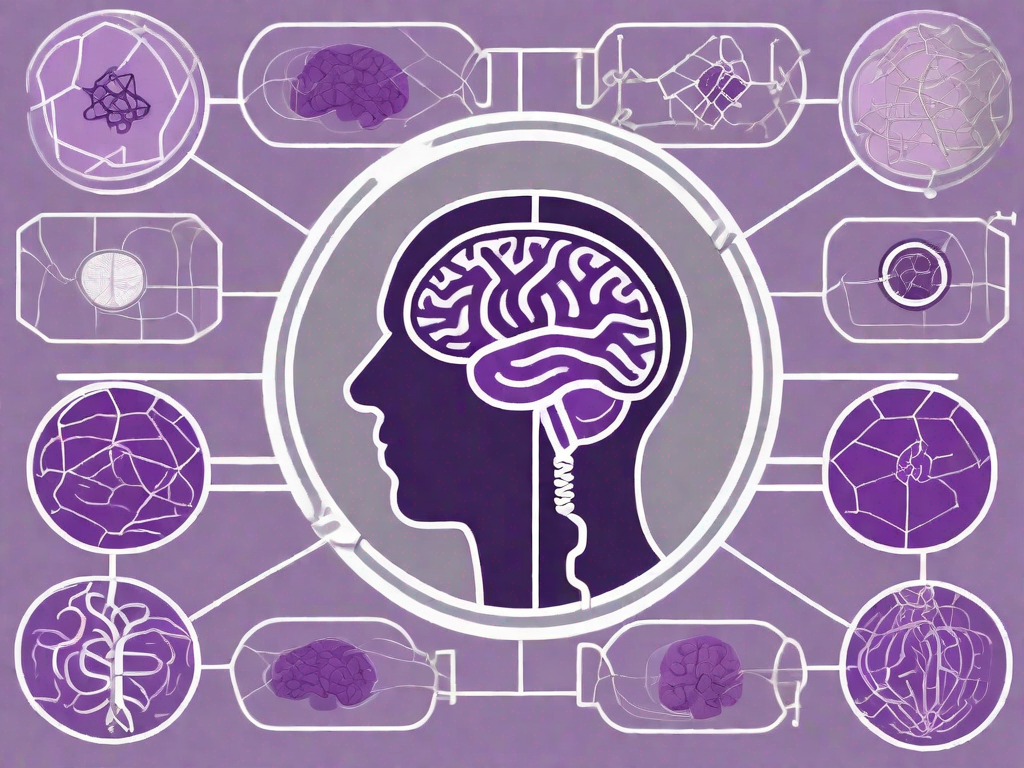
The Science of Addiction: What Happens Inside the Brain?
Addiction is a complex and multifaceted condition that affects millions of individuals worldwide. It is a disease characterized by compulsive drug or behaviour-seeking despite negative consequences. To truly understand addiction, it is essential to delve into the intricate workings of the brain and explore the physiological changes that occur.
Understanding Addiction: A Comprehensive Overview
Before delving into the specific mechanisms of addiction, it is important to define what addiction truly is. Addiction can be defined as a chronic, relapsing disorder characterized by compulsive drug seeking and use, despite harmful consequences. It is a condition that affects the brain, leading to an inability to control substance use or engage in harmful behaviours.
Substance addiction is not limited to drugs but can also include behaviours such as gambling or compulsive eating. These behavioural addictions can be just as debilitating as substance addictions, impacting various aspects of an individual’s life.
When it comes to substance addiction, there is a wide range of substances that can lead to addictive behaviours. Some of the most common types of substance addictions include:
Cocaine Addiction: Cocaine is a powerful stimulant drug that affects the central nervous system. It produces intense euphoria and increased energy levels, making it highly addictive.
Heroin Addiction: Heroin is an opioid drug derived from morphine. It is known for its highly addictive properties and can lead to severe physical and psychological dependence.
Alcohol Addiction: Alcohol is a legal substance that is widely consumed. However, excessive and prolonged alcohol use can lead to addiction, causing significant damage to both physical and mental health.
Nicotine Addiction: Nicotine is the addictive substance found in tobacco products. Smoking cigarettes or using other nicotine delivery systems can lead to nicotine addiction, which is notoriously difficult to overcome.
In addition to substance addictions, there are various behavioural addictions that can have a profound impact on individuals’ lives. These behavioural addictions include:
Gambling Addiction: Gambling addiction is characterized by an uncontrollable urge to gamble, despite negative consequences. It can lead to financial ruin, strained relationships, and a loss of control over one’s life.
Gaming Addiction: With the rise of online gaming, gaming addiction has become a significant concern. It involves excessive and compulsive gaming that interferes with daily life activities and responsibilities.
Internet Addiction: Internet addiction refers to the excessive and compulsive use of the Internet, leading to negative consequences such as neglecting personal relationships, work, and other important aspects of life.
Excessive Shopping: Compulsive buying or shopping addiction is characterized by an uncontrollable urge to shop and spend money, often resulting in financial difficulties and emotional distress.
It is crucial to recognize that addiction is a complex issue that goes beyond the substances or behaviours themselves. It involves a combination of genetic, environmental, and psychological factors that contribute to its development and persistence. Understanding the different types of addiction and their underlying mechanisms is essential in order to provide effective prevention and treatment strategies.
The Brain’s Role in Addiction
The brain plays a central role in addiction, with certain areas and neurotransmitters being heavily involved in the process. Understanding the intricate workings of the brain can shed light on why addiction occurs and how it affects individuals.
The Brain’s Reward System
The brain’s reward system is a complex network of structures that regulate feelings of pleasure and reinforce positive behaviours. Within this system, the neurotransmitter dopamine plays a crucial role. Dopamine is released in response to pleasurable experiences, reinforcing the behaviour that led to it. This reinforcement mechanism is essential for survival, as it encourages behaviours such as eating, drinking, and reproducing.
However, in individuals with addiction, this reward system becomes dysregulated. Repeated exposure to drugs of abuse hijacks the brain’s natural reward circuitry, leading to profound changes in how the brain responds to pleasure. As a result, drug-seeking behaviour becomes compulsive, and the individual becomes less responsive to natural rewards, such as food or social interactions.
Research has shown that chronic drug use alters the structure and function of the brain’s reward system. Long-term drug exposure can lead to a decrease in the number of dopamine receptors, making it harder for individuals to experience pleasure from everyday activities. This desensitization to natural rewards contributes to the cycle of addiction, as the individual becomes increasingly reliant on drugs to experience any sense of pleasure or reward.
Neurotransmitters and Their Impact on Addiction
Neurotransmitters, such as dopamine, serotonin, and GABA, play a pivotal role in addiction. These chemical messengers communicate between brain cells and are crucial for normal brain function. They help regulate mood, emotions, and various cognitive processes.
In the context of addiction, drugs of abuse interact with these neurotransmitters, disrupting their normal balance and leading to the addictive effects seen in addiction. For example, drugs like cocaine and amphetamines increase the levels of dopamine in the brain, leading to intense feelings of euphoria and reinforcing drug-seeking behaviours. This flood of dopamine overwhelms the brain’s reward system, creating a powerful association between drug use and pleasure.
Similarly, other neurotransmitters, such as serotonin and GABA, are also affected by drugs of abuse. Serotonin, known as the “feel-good” neurotransmitter, helps regulate mood and emotional states. Drugs like MDMA, commonly known as ecstasy, increase serotonin levels, leading to feelings of empathy and euphoria. GABA, on the other hand, is an inhibitory neurotransmitter that helps calm brain activity. Drugs like alcohol enhance the effects of GABA, leading to sedation and relaxation.
By disrupting the delicate balance of neurotransmitters in the brain, drugs of abuse can alter mood, cognition, and behaviour. These changes contribute to the development and maintenance of addiction, as the brain becomes dependent on the presence of drugs to function normally. Understanding the intricate interplay between the brain and addiction is crucial for developing effective treatments and interventions. By targeting specific neurotransmitter systems and restoring balance in the brain, it may be possible to alleviate the grip of addiction and help individuals on their path to recovery.
The Process of Addiction: From First Use to Dependence
Understanding the progression of addiction is essential to comprehend its long-term effects on the brain. Addiction is a complex and multifaceted phenomenon that involves various stages, each with its own unique characteristics and implications.
The Initial Stage: Experimentation
The initial stage of addiction often begins with experimental drug or behavioural use. At this stage, individuals may engage in substance or behaviour out of curiosity or social pressure.
Experimentation can take many forms, such as trying a new drug at a party or engaging in risky behaviours for the thrill of it. It is important to note that not everyone who experiments with drugs or engages in risky behaviours develops an addiction. However, it can be the first step towards a problematic relationship.
During the experimentation phase, individuals may experience a range of emotions and sensations. Some may find the experience pleasurable, while others may feel anxious or fearful. The initial effects of the substance or behaviour can vary widely, depending on the individual’s unique biochemistry and circumstances.
Moreover, the social context in which experimentation occurs can play a significant role in shaping future behaviours. Peer influence, societal norms, and cultural factors can all contribute to the likelihood of continued substance use or behaviour engagement.
The Progression: Regular Use and Risk of Dependence
With continued substance use or behaviour engagement, regular use can develop. Regular use involves increased and consistent engagement in addictive behaviour. Individuals may find themselves using the substance or engaging in the behaviour on a more frequent basis, often as a means of coping with stress, seeking pleasure, or escaping reality.
Over time, the brain adapts to the presence of the substance or behaviour, leading to tolerance and the need for higher doses or more frequent engagement to achieve the same effects. This increased tolerance and the associated withdrawal symptoms are early signs of dependence, a hallmark of addiction.
Dependence is characterized by a compulsive need to engage in addictive behaviour, despite negative consequences. Individuals may experience intense cravings, difficulty controlling their use, and a preoccupation with obtaining and using the substance or engaging in the behaviour. Dependence can have profound effects on various aspects of an individual’s life, including relationships, work or school performance, and physical and mental health.
It is important to recognize that addiction is not a linear process, and individuals may progress through the stages at different rates. Factors such as genetic predisposition, environmental influences, and personal resilience can all impact the trajectory of addiction.
Understanding the process of addiction can help inform prevention and “treatment strategies such as online addiction treatment, as well as promote empathy and support for individuals struggling with addiction” says Luke Worsfold addiction counsellor from Lisa Inside Addiction.
Cognitive Impairments Due to Addiction
Chronic drug use can lead to significant cognitive impairments, affecting memory, attention, and decision-making abilities. These impairments stem from alterations in the brain’s structure and functioning, leading to difficulties in various cognitive domains.
Prolonged drug use leads to structural changes in the brain that can impact overall brain health. These changes can include reduced gray matter volume, compromised white matter integrity, and alterations in brain connectivity. These structural changes in the brain further contribute to the difficulties experienced by individuals with addiction.
Brain’s Ability to Heal and Recover
Remarkably, the brain has a remarkable ability to heal and recover even after prolonged periods of addiction. This process, known as neuroplasticity, allows the brain to adapt and rewire itself in response to changes in the environment. Through abstinence, therapy, and support, individuals in recovery can experience improvements in cognitive function, emotional well-being, and overall brain health.
In conclusion, addiction is a complex condition that alters the brain’s functioning and structure. Understanding the science behind addiction is crucial for developing effective prevention and treatment strategies. By exploring the brain’s reward system, neurotransmitters, addiction’s progression, long-term effects, and the possibilities of recovery, we can shed light on the inner workings of addiction and how to overcome it.



















